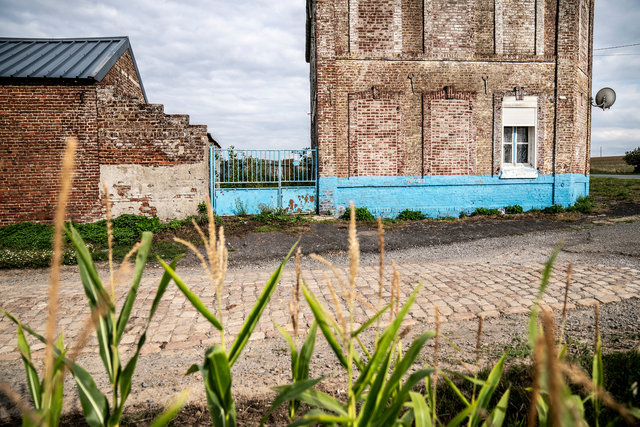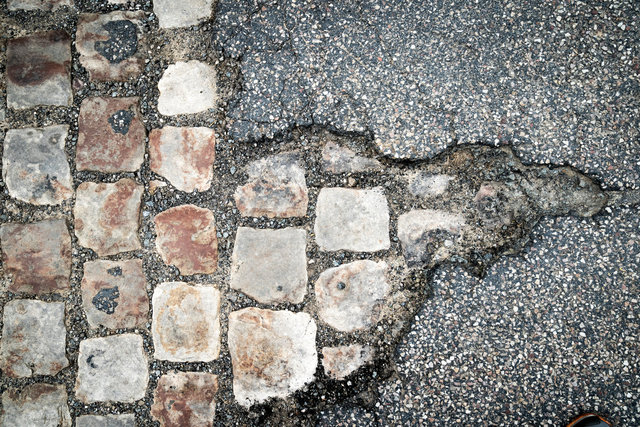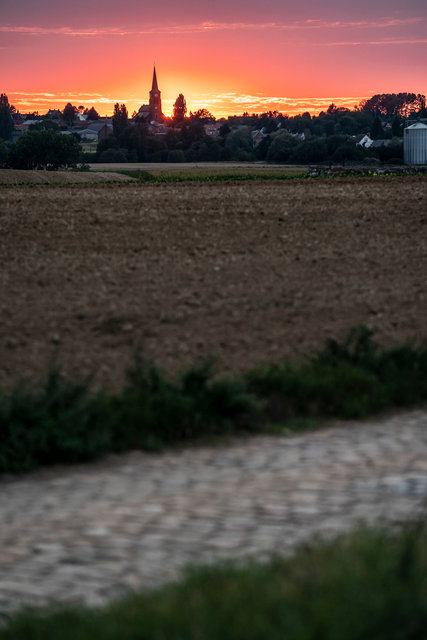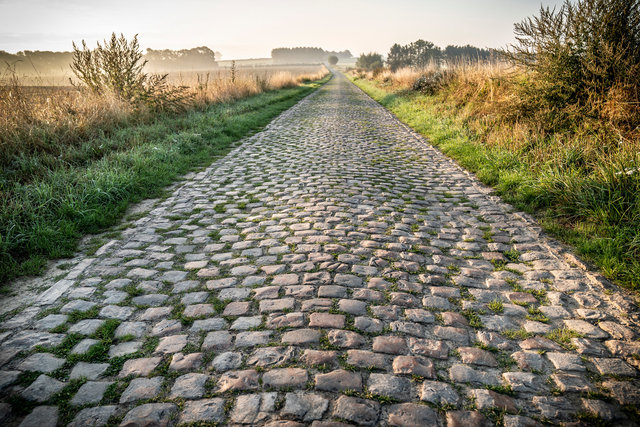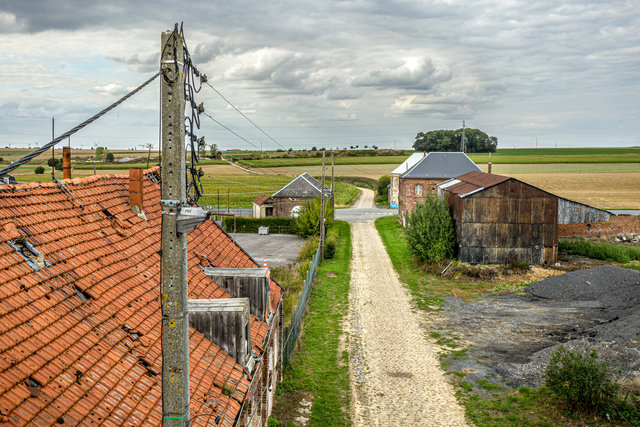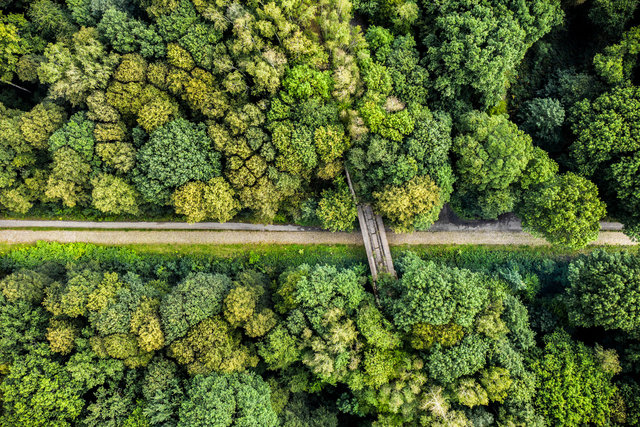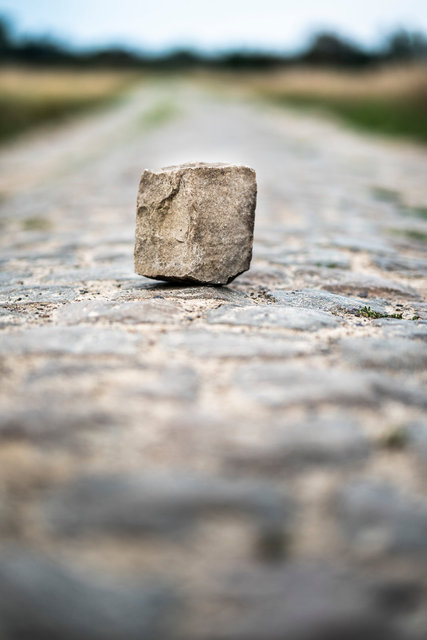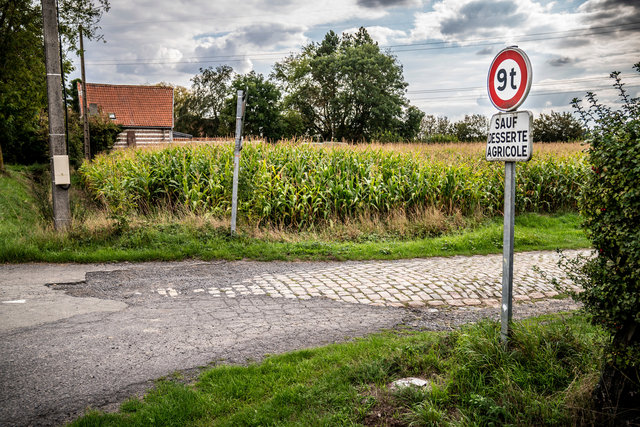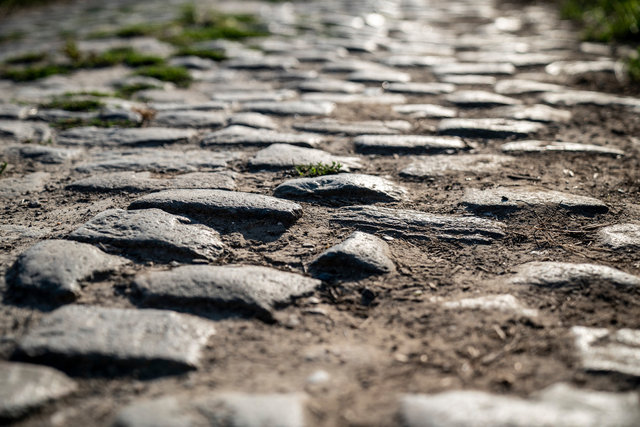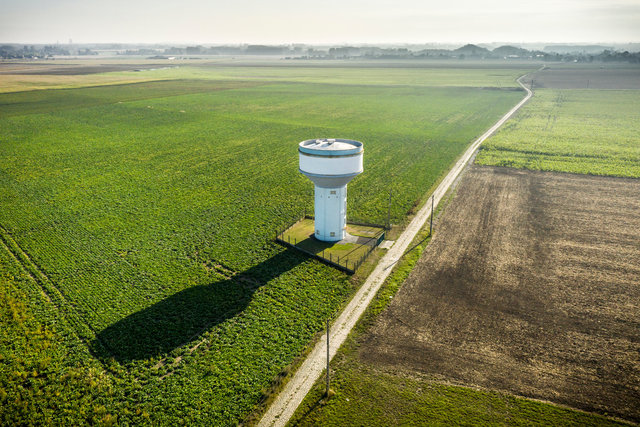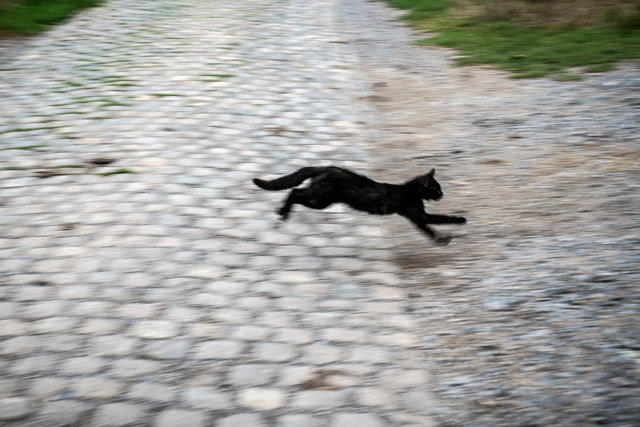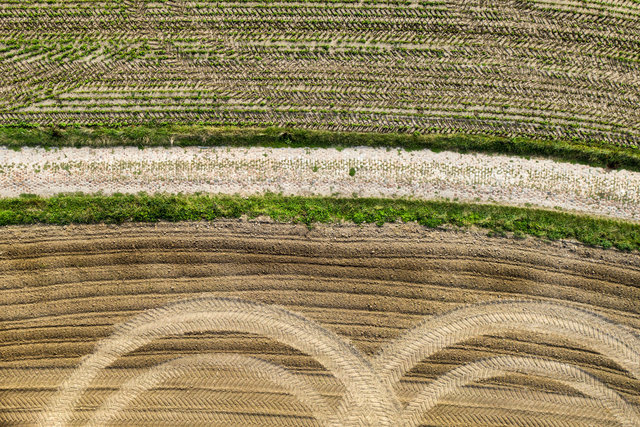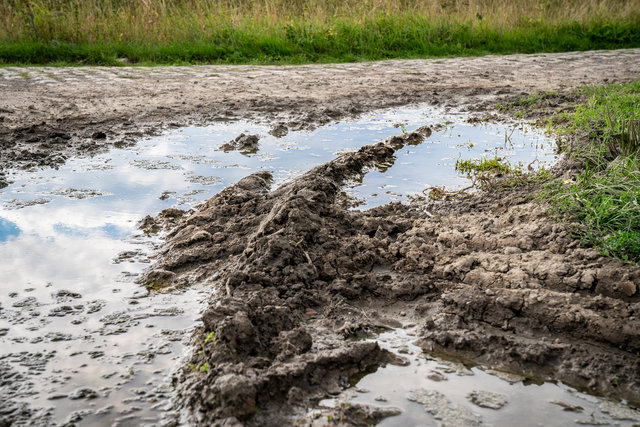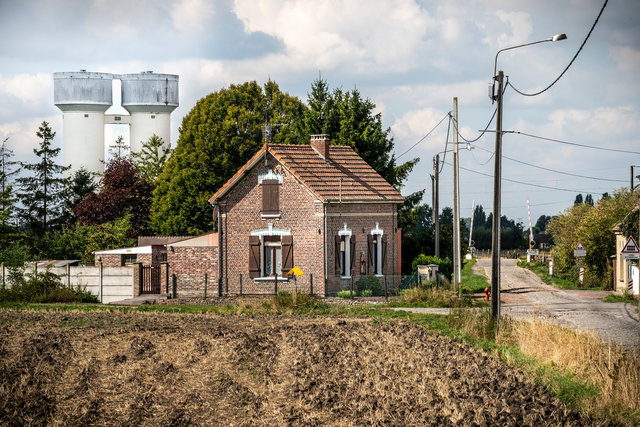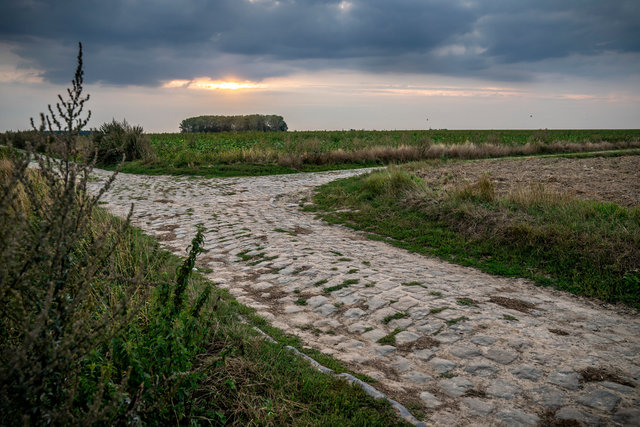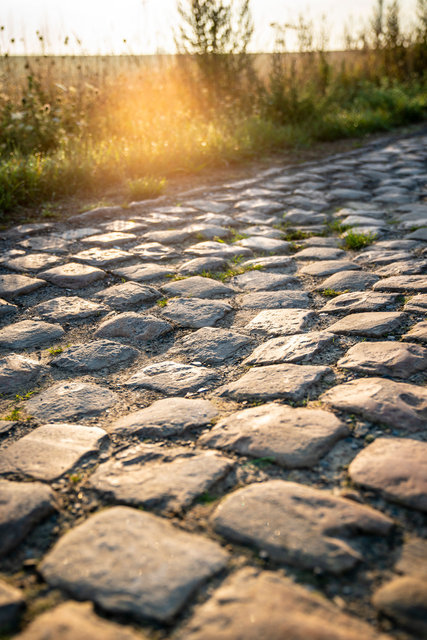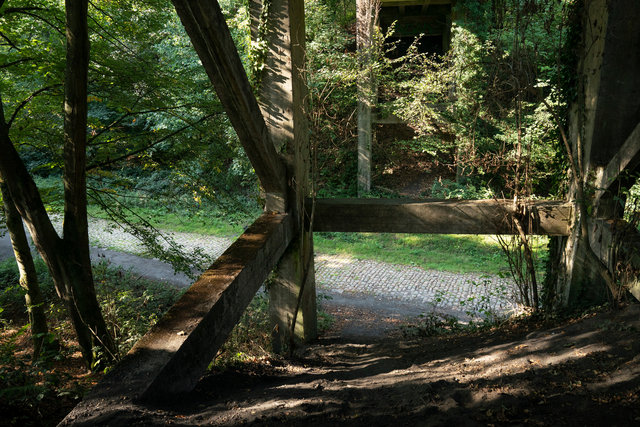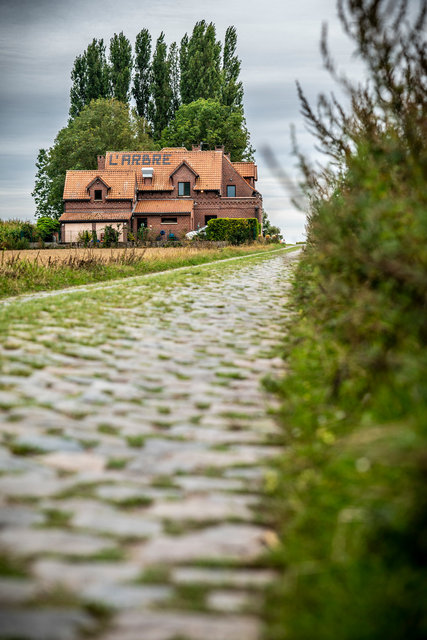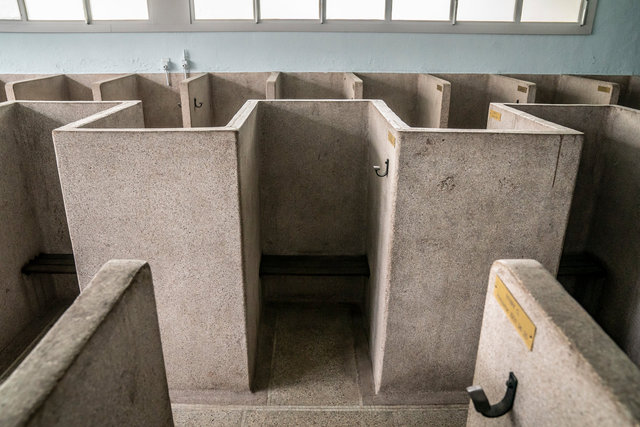L’enfer du Nord
Due to corona, the cobblestone sections of Paris-Roubaix remained empty in 2020. The queen of classics is considered one of the toughest races where bicycles, bones and egos can break. The heroic status of the cycling race is undoubtedly due to the cobblestones; cursed and loved by riders. After the First World War, the damaged roads of northern France were filled en masse with these rough boulders. Almost a hundred years later, heavy agricultural machinery left deep marks on the pavés. The star status of the cobblestone strips is determined by the length of the strip and the position of the stones. Sometimes they lie neatly side by side, but more often they seem randomly plunged from hell; the gaps in between even bigger than the boulders themselves. Infamous five-star segments such as the Forest of Wallers, Mons-en-Pévèle and Le Carrefour de l’Arbre are often decisive. Jheronimus Bosch, renowned portrayer of hell and damnation, painted “The Stone Cutter”. A representation of the surgical removal of the stone of madness from a person’s head. For many riders it is already too late, the folly in the head seems incurable. Certainly with a chance of glory in this mythical race. The rider who pushes his front wheel first over the finish line of the Vélodrome not only wins the Hell of the North but also a place in cycling heaven forever.
Due to corona, the cobblestone sections of Paris-Roubaix remained empty in 2020. The queen of classics is considered one of the toughest races where bicycles, bones and egos can break. The heroic status of the cycling race is undoubtedly due to the cobblestones; cursed and loved by riders. After the First World War, the damaged roads of northern France were filled en masse with these rough boulders. Almost a hundred years later, heavy agricultural machinery left deep marks on the pavés. The star status of the cobblestone strips is determined by the length of the strip and the position of the stones. Sometimes they lie neatly side by side, but more often they seem randomly plunged from hell; the gaps in between even bigger than the boulders themselves. Infamous five-star segments such as the Forest of Wallers, Mons-en-Pévèle and Le Carrefour de l’Arbre are often decisive. Jheronimus Bosch, renowned portrayer of hell and damnation, painted “The Stone Cutter”. A representation of the surgical removal of the stone of madness from a person’s head. For many riders it is already too late, the folly in the head seems incurable. Certainly with a chance of glory in this mythical race. The rider who pushes his front wheel first over the finish line of the Vélodrome not only wins the Hell of the North but also a place in cycling heaven forever.

